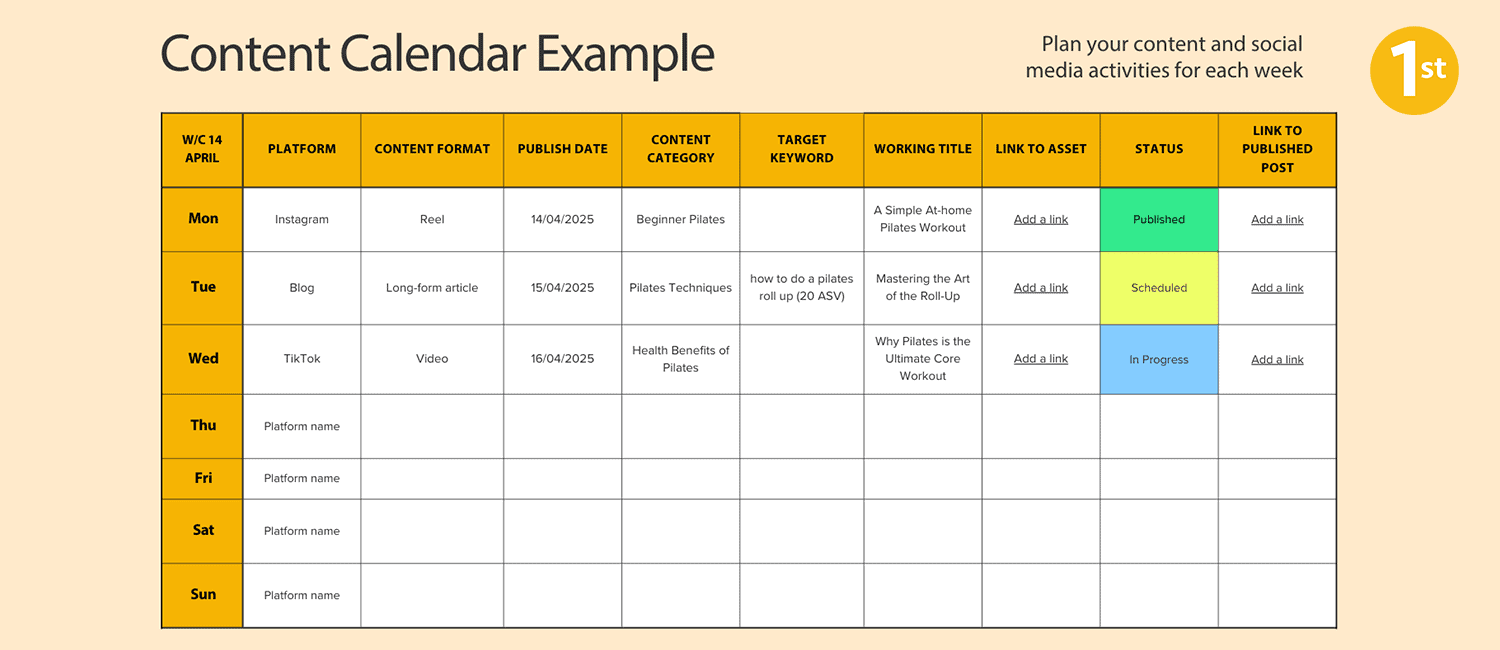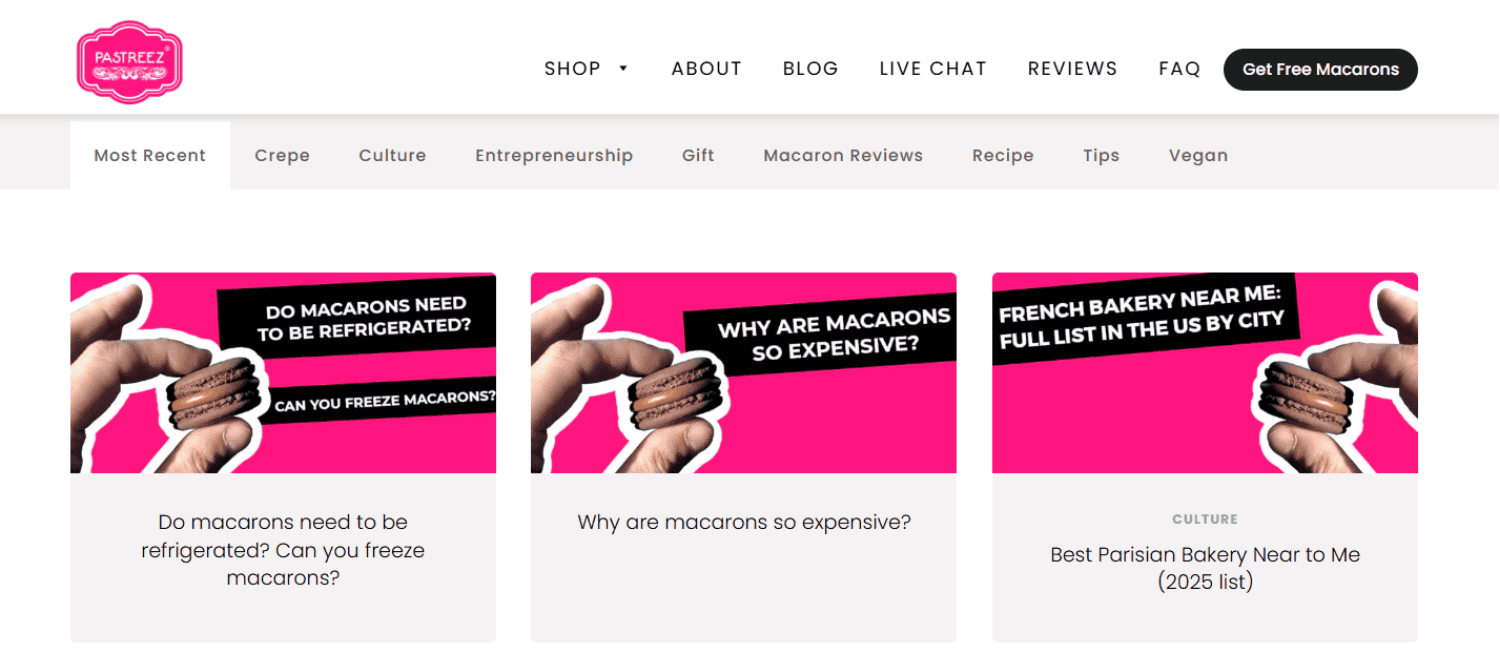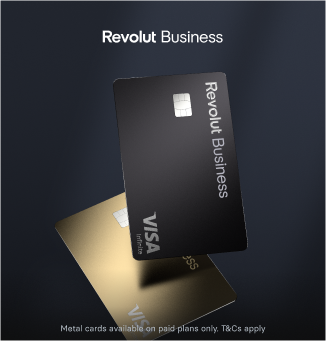The digital landscape is crowded. You’re not alone if you’re a small business owner wondering how to get noticed. Knowing where to begin when large companies dominate search results, ad placements, and social media feeds is even more challenging. Not to mention, AI models like ChatGPT are changing the game in terms of how customers discover brands.
Whether you’re running a small consultancy agency, local deli, e-commerce site, or another type of business, strategic content marketing is more important than ever. It’s often underestimated but is key to being discoverable, attracting the right audience, building trust, and fostering loyalty.
In this guide, we’ll discuss how you can use content marketing to become helpful, visible, and credible in your industry. We’ll walk you through the value of content marketing for small businesses, how to build a practical DIY strategy, and which tools and methods will help you succeed.
Key Takeaways
- Small businesses can gain visibility and engage potential customers by consistently sharing useful, relevant content tailored to their audience.
- Strategic collaborations with like-minded businesses can expand your reach without increasing your budget.
- Employee-generated content and authentic, unfiltered videos are helping small businesses build trust and deeper connections with their audience.
Why content marketing matters more than ever
Visibility is necessary for small businesses. Consumers continue to rely on search engines, social media, and, increasingly, AI tools such as Perplexity AI, ChatGPT, and Gemini to make purchasing decisions. If your business isn’t visible with relevant and helpful content, you’re missing a chance to connect with potential customers.
Content marketing also helps boost discoverability through search engine optimisation (SEO), establish your business’ authority over time, and foster engagement, converting passive viewers into potential customers. Unlike paid media, which comes to a halt when you pause your budget, content keeps delivering value long after it’s published.
When asked why content marketing matters from a CEO’s perspective, Graeme Donnelly, founder of 1st Formations, shared: “As the CEO of a company formation and business startup firm, I’ve seen first-hand how content marketing plays a pivotal role in building trust and fuelling engagement with our audience. Consistently delivering valuable, informative content has positioned us as a trusted resource for entrepreneurs navigating the complexities of starting a business.”
Build a simple content marketing strategy in 5 steps
1. Define your goals
An effective content marketing strategy begins with setting clear goals. What does success look like for your business? Is it increased website traffic? Higher conversion rates? Retaining more customers? Once you’ve defined your goals, you can reverse-engineer the steps to achieve them.
2. Segment your target audience
Next, identify your target audience. Think beyond basic demographics, such as location, gender, age, and profession. Try to understand your audience’s specific pain points, needs, and what influences their purchase decisions. The better you understand your audience, the more effectively you can tailor your content to meet their needs.
3. Choose your channels wisely
Small businesses can spread themselves too thin across every possible platform or go to the other extreme by focusing only on one – both being a common pitfall.
Start by focusing on platforms that align with your strengths and your audience’s preferences, but don’t limit yourself to one channel.
For different channels, you’ll need to leverage different skills:
- Writing skills – necessary for crafting long-form blog content, LinkedIn articles, and email newsletters.
- Creative and visual skills – crucial for leveraging Instagram, Pinterest, or YouTube for visual storytelling.
- Conversational skills – helpful for TikTok, YouTube, and podcasts for short, engaging dialogue.
We spoke with Sara Murray, Senior Content Marketing Manager at Bright Network – a platform helping companies find the talent they need to grow and helping graduates find the opportunities to succeed – to get her insights into using different channels at the beginning of your business’ content marketing journey.
If you’re just getting started in organic content, I’d say not to put all your eggs in one basket in terms of channels and formats. Think about what touchpoints your ideal customer might have in their journey to finding you.
This is where understanding your audience and tailoring content to their habits makes a difference. As Sara highlights, “Perhaps they interact with your brand on LinkedIn, via Search, and again through social media. Hitting that multi-channel presence enforces your message and means you can make one piece of content work really hard, repurposing it across different formats and channels to maximise your ROI.”

Not sure how to master content for different channels? Take Sara’s advice on repurposing content. For example, turn a blog post into bite-sized social tips, a short video for Instagram or TikTok, a graphic for Instagram Stories, and a section in your next newsletter. This stretches your content further and helps engage audiences across different formats and attention spans.
4. Map content to the customer journey
Your content should support your customers at every stage of their journey, from awareness to conversion. By aligning content with the customer journey and targeting your audience at every stage, you can make your messaging relevant and timely.
Break it down into three core stages:
- Top of funnel (awareness) – this is when potential customers are first exposed to your brand. How can you spark curiosity, answer a question, or solve a relatable problem? Inspirational blog articles or educational TikTok videos are examples of awareness content – they introduce your brand without being salesy.
- Middle of funnel (consideration) – your audience is familiar with your brand at this point, so it’s your chance to make your business stand out against competitors. What is your unique value proposition (UVP)? What are the benefits of your product or service, and how do these resolve common pain points? Potential customers are likely weighing up their choices, so creating case studies, promoting testimonials, and showcasing your credibility is crucial.
- Bottom of funnel (conversion) – customers are ready to make a purchase. At this stage, you want to help them make their final decision. You can do so with clear CTAs, engaging demos, honest reviews, and benefit-driven information about your offering.
Mapping your content this way helps you pinpoint gaps in your strategy and avoids investing time in creating redundant or irrelevant content that doesn’t drive results.
Why not start with some customer success stories? At 1st Formations, we regularly interview business owners to understand and spotlight their experience of registering a company and using our services. For instance, Andrew Burton, founder of Shoreditch Design Agency, recently shared the story behind his business idea and how he funded his startup.
5. Use a content calendar
A well-organised calendar helps you stay on track. You don’t have to start from scratch either – Canva and Google Sheets offer templates to customise. We’ve also created a template below to inspire you.

Your content calendar should include columns for the following:
- Content theme or category – content groups that align with your business offering and target audience’s interests
- Draft content title – a working title for your piece of content
- Target keyword – what is primary term or query that your audience is searching for and that you can answer in your content?
- Content format – are you planning a blog article, reel, or LinkedIn post?
- Content platform – where will you publish your content?
- Draft and publish dates – when should your content go live?
- Status – keep track of what’s to do, in progress, and complete
Don’t let your content calendar gather virtual dust. Review it monthly to amend your approach based on what’s working and what isn’t.
SEO starter pack for small businesses
If you’re new to running a business and have a lot on your plate, it’s understandable to shy away from SEO. After all, it can seem daunting. The good news is that SEO is fundamentally about understanding how your ideal customer searches.
What do they search for and why? What are they hoping to find? Is it an answer to a specific question? Or are they looking for a resource, such as a checklist, to perform a task?
You can write the most helpful blog post in the world, but it’s no good if it’s invisible. That’s where SEO-driven content comes in. And it doesn’t need to be technical or expensive. When you have a solid content marketing strategy in place, as a small business owner, you can start creating helpful content that performs well.
1. Start with keyword research
Before you write anything, understand what your customers are searching for. Keyword research is necessary in any successful content marketing strategy for small businesses.
First, familiarise yourself with tools such as Google Trends, AnswerThePublic, or even the autocomplete function in search bars. These tools help you identify real-world questions and phrases people use when searching.
Secondly, look for “low-hanging fruit” keyword opportunities. These are search terms with reasonable monthly average search volume (ASV) – which means people are looking them up fairly often – and low competition. They are usually longer phrases (called long-tail keywords) or location-specific terms.
For example, instead of trying to rank for “coffee shop”, aim for “best coffee shop in Covent Garden”. If you run a local business, adding your town or city to keywords can help you show up in search results.
2. Understand user intent
There’s no hope of being visible if your content is irrelevant or meaningless – that is if it doesn’t align with what the user wants. That’s where search intent plays a role.
Every piece of content should map to one of three key search intent types:
- Informational – searching for knowledge or how-to advice
- Commercial – ready to make a purchase; comparing products or services
- Navigational – looking for a specific brand or product
So, what does this mean in practice? If you’re writing a blog, the introduction must lead clearly into the topic and address the user’s question immediately. If you’re creating a product page, give the product a clear title, then call out the key features in the description – attach these to benefits in a way that’s engaging and easy to understand.
3. Use our on-page SEO checklist for small businesses
Include your target keyword naturally and strategically across your content. Don’t overdo it or “overstuff” your content with it – this will only harm your website’s ranking potential. Instead, think of your target keyword as a signal, helping both readers and search engines understand the page.
Use this checklist for small business owners to improve your on-page SEO:
- Use the main keyword in your content – include it in the title, metadata (meta title and meta description), URL slug, first 100 words, and naturally throughout the page’s content
- Write a clear meta or page title which uses the main keyword – aim for a maximum of 60 characters
- Write a clear meta description (around 130–150 characters) – describe the page’s content accurately and indicate what to expect from it
- Add alt text to all images – this improves accessibility and helps Google understand visuals on the page
- Aim for a logical structure – use H tagging (H1 for the main title, followed by H2s, H3s, and so on for subheadings) and introduce bullet points or numbered lists so content is easy for search engines to crawl
- Link to internal pages (internal linking) – link to related blog content, core service or product pages, and your homepage where relevant
- Include links to credible external sources to boost your page’s trust signals
4. Hit refresh, don’t delete
You don’t always need to create something new to get better results. Revisiting and improving your older content can deliver quick SEO wins.
Every 6-12 months, carve out time to review and refresh your long-form content. You can improve your small business’ content by:
- Adding a table of contents or 2-4 key takeaways
- Updating out-of-date statistics or data points
- Improving readability by breaking up long paragraphs, adding subheadings, and introducing bulleted or numbered lists
- Replacing broken links or low-quality images
- Embedding new media like videos, infographics or testimonials
- Integrating newly relevant keywords based on current trends or keyword research
- Linking out to authoritative (external) sources for added trust and relevancy
- Adding a relevant call to action (CTA)
With SEO, you are what you E-E-A-T
Search engines favour websites that demonstrate experience, expertise, authority, and trustworthiness. That’s the basis of Google’s E-E-A-T content quality guidelines, which contribute to its goal of serving the most useful, reliable, and relevant information.
As Lily Ray, VP of SEO Strategy & Research at Amsive Digital, said in a YouTube interview with Jerrel Arkes in March 2025, “I don’t think E-E-A-T can be quantified. Generally the checklists give you a good starter point, but it’s important to think beyond the checklist. You can’t just follow the same thing everybody else did. That’s not how SEO works anymore. You have to truly think about how I can convey to my audience, in this particular niche, in this particular category, that I can be trusted.”
We asked Heemesh Vara, SEO Director at 1st Formations, to share his top tip for small businesses: “One easy way to boost E-E-A-T is by adding author bios to your content that highlight real experience. Mentioning who you are, what you do, and how long you’ve been doing it can instantly build credibility with both users and search engines.”
Case study: Pastreez
The website for Pastreez, an online macaron delivery business, demonstrates that strategic SEO content marketing can lead to an uptick in sales.
Yami and Anthony Rosemond launched the site in 2017 with just three product pages. Anthony used Semrush to collect data and identify core keywords (“macaron gifts”, “buy macarons”, etc.) to include in the existing and new product pages.

Their growth strategy was simple: dominate organic search through narrow-focused keywords with a commercial intent, integrated into SEO-friendly content.
In just six months, Pastreez’s website:
- Ranked #1 on Google for the query “macarons near me”
- Built a funnel where 55% of sales come from non-branded organic traffic
- Facilitated the opening of their first physical location in California
The founders’ SEO approach involved:
- Identifying high-value keywords using Semrush
- Creating product pages focusing on commercial-intent keywords
- Publishing blog articles targeting a specific keyword, addressing informational queries such as ‘Why are macarons so expensive?’
- Structuring their website for easy navigation and user experience
Their success proves that aligning content with keywords and user intent can drive profitability and long-term visibility.
How strategic partnerships can power content
We spoke with Jessica Kumar, former Omnichannel Marketing Campaigns Lead at Liberty, with experience in brand safeguarding and partnerships at Selfridges, to understand how strategic partnerships can form part of your business’ content strategy.
Jessica shared: “The best brand partnerships come from aligning values and a mutual understanding of what you stand for. It’s about gaining credibility by association. When you collaborate on thoughtful content – like an interview, a behind-the-scenes video, or a joint social campaign – it brings both brands to life and helps build a more authentic connection with your audience.”
We also enjoyed speaking to Bonny Leyser, founder and CEO of UK-based esports agency Shadow Rising, who built her business from the ground up without external funding. Rather than taking shortcuts, she leaned into long-term partnerships to grow gradually but meaningfully.

She explained: “It was difficult at times due to the high initial expenses. However, I realised that focusing on long-term outcomes was essential. I concentrated on building a sustainable partnership community – one where everyone involved could work toward and ultimately achieve their own goals.”
For Bonny, partnerships aren’t just about financial support or name-dropping big brands – collaborating with institutions like universities and government bodies gave her agency the reputation boost it needed, and the content that comes with it, such as case studies and co-created insights, are assets that build trust.
These values-driven relationships help smaller players be seen – especially when what’s created together is shared with purpose across the right channels.
3 content marketing trends to watch
How we create and consume content is constantly evolving, but a few trends are shaping how small businesses can compete effectively in 2025 and into 2026.
1. Zero-click content is rising
Google is increasingly displaying quick, AI-generated answers (called “AI Overviews”) directly on search pages.
These answers summarise information scraped from various webpages, often eliminating the need to click through to the original sources – hence the phrase ‘zero-click content’.
This impacts small and mid-sized websites like DIY and travel blogs and recipe and product review sites. Some are already noting a drop in traffic. Morgan McBride, a DIY home improvement blogger, was featured in a Google ad highlighting how the company had helped her business grow. Just a month later, her site’s traffic from Google dropped by over 70%.
- Marketing your UK small business from overseas
- 10 marketing strategies for small businesses
- How to grow a small business with TikTok
Unlike past algorithm shifts, it didn’t bounce back – and McBride believes Google’s new AI-generated answers are now replacing clicks to websites like hers.
To mitigate this risk, focus on creating high-quality, original content, and don’t rely solely on a single platform like Google. Foster engagement through social platforms like TikTok, online communities, podcasts, and events.
2. Authenticity is trumping perfection
People prefer raw, honest, and relatable content over heavily produced or edited content. Embrace the flaws in video content and encourage customers to share their self-made content – or user-generated content (UGC) – around your product or service.
According to survey results in 2023 by UGC and creator management platform EnTribe, 85% of consumers prefer to see brands post content from actual customers. If you haven’t already, explore platforms like TikTok and YouTube Shorts, which prioritise snappy, engaging content with strong hooks, clear value, and a human touch.
Secondly, participate in online forums and conversations online. As traditional search evolves to AI-driven summaries and Google’s algorithm favours platforms like Reddit and Quora, explore new tools and formats to engage users.
Where is your audience consuming content? Think about participating in relevant TikTok discussions in the comments section, joining forums where your customers are present, building your online community, engaging with your audience through surveys and polls, or participating in podcasts.
3. Employee-generated content (EGC) is breaking onto the scene
Small business owners can drive further engagement this year by creating content – either themselves or by asking employees to – that reflects their company’s values and day-to-day realities.
Coined as employee-generated content (EGC), this content strategy humanises your brand. Businesses applying it successfully are taking to Instagram Reels and TikTok primarily. Why adopt it? First, it’s cost-effective. Second, it’s authentic. Again, it’s not about perfection; it’s about showing the real people behind your brand and inviting your audience into your company’s story.
As Joshua Levy, Videographer at 1st Formations, says, “People aren’t really that into big glossy ads these days. What actually grabs attention are the real, unfiltered moments. When your team shows up as themselves, it just feels more genuine, and that’s what people connect with. Even little things like a quick ‘meet this team member’ video can seriously boost how relatable your brand feels.”
For example, 404, an independent café in Wandsworth, London, posts short videos of its baristas sharing their recent latte art. For customers, this creates a more personal connection with the business.
Similarly, Kelly Chandler—founder of Kelly Chandler Consulting, venue expert, and high-end customer experience consultant—regularly shares the business-related discussions she and her husband have over the dinner table, ‘Chez Chandler’, on LinkedIn.
In one post, she shared their insights on the importance of emotional intelligence in business: “Only a tiny sprinkling of emotional intelligence [is] needed. Some thought and joined-up internal communications of ‘how is this going to be received by the clients’ before sending. A little more from senior leadership of how can we see the bigger (human) picture”. These stories demonstrate her knowledge as an entrepreneur and shed light on conversations she has with her fellow business-owner husband.
Small business content marketing roadmap
We know small business owners are often pressed for time. So, to help you get started and build momentum, we’ve done the legwork. Here’s a practical roadmap for your content marketing journey.
Week 1: Write and share
- Identify a customer question and write a blog post answering it. Start with something you’re asked often, as your wider audience is likely wondering the same. Keep it simple, helpful, and conversational.
- Share the post across your social platforms – tailor the post slightly per platform. For example, lead with a strong visual (ideally an original image) on Instagram, but use a clear headline, key takeaways and link on LinkedIn.
- Break it down into shorter snippets or visual quotes – use free design tools like Canva to create graphics for social posts. Or, turn each key point into individual posts to stretch your content further.
Week 2: Create a reel
- Record a 60-90 second tip, tutorial, or behind-the-scenes moment—don’t overthink it. Show something authentic, such as how you package orders or a quick ‘how-to’ using your product.
- Post to Instagram, YouTube Shorts, or TikTok – choose the platform where your audience spends time and experiment with cross-posting to other channels to expand your reach.
- Ask a question to encourage engagement – end the video with a prompt like “Have you tried this?” or “What’s your go-to tip?” to encourage commenting and spark discussion.
Week 3: Collaborate
- Partner with a customer or similar business for an interview or co-created post. Choose someone whose audience overlaps with yours and who shares similar values. Focus on relevance rather than follower count.
- Turn the conversation into a blog or reel – extract key insights for your blog and edit any entertaining or insightful snippets into a short video. This gives you two strong content pieces in one.
- Explore sharing it across both audiences – tag each other’s businesses, post on both platforms and consider a joint giveaway or Q&A to maximise reach and engagement.
Week 4: Review and optimise
- Review analytics – check your social and website insights to see what generated the most engagement (likes, clicks, comments, shares, or traffic).
- Update next month’s plan based on data – if reels outperformed blog posts, plan more video content. If educational tips did well, create a new content series. Let data guide your content direction.
- Reuse top-performing content with a different angle or visuals – give your content a new perspective, with fresh imagery to make it work harder.
Start small and stay consistent
Content marketing for small businesses isn’t about doing everything at once. It’s about doing the right things for your business and audience consistently. Whether you’re a solopreneur or running a growing startup, your unique insights are your biggest advantage, and your content should be king – or queen.
Every helpful blog article, every shared story, and every authentic video builds trust with your audience. Over time, those small efforts will help achieve growth, improve brand reputation, and foster customer loyalty.
Our insightful blog articles and startup guides have educated prospective customers and built meaningful relationships with them. This trust has translated into increased engagement, higher conversion rates, and long-term loyalty, underscoring content marketing’s critical role in driving sustainable growth for our company. – Graeme Donnelly, CEO of 1st Formations
Why not choose one idea from this guide and put it into action? Then, track the results to see what works for your business. Ready to keep the momentum going? Explore the rest of the 1st Formations blog for more strategies, and share your insights in the comments – we’d love to hear what you learn along the way.
Please note that the information provided in this article is for general informational purposes only and does not constitute legal, tax, or professional advice. While our aim is that the content is accurate and up to date, it should not be relied upon as a substitute for tailored advice from qualified professionals. We strongly recommend that you seek independent legal and tax advice specific to your circumstances before acting on any information contained in this article. We accept no responsibility or liability for any loss or damage that may result from your reliance on the information provided in this article. Use of the information contained in this article is entirely at your own risk.














Join The Discussion